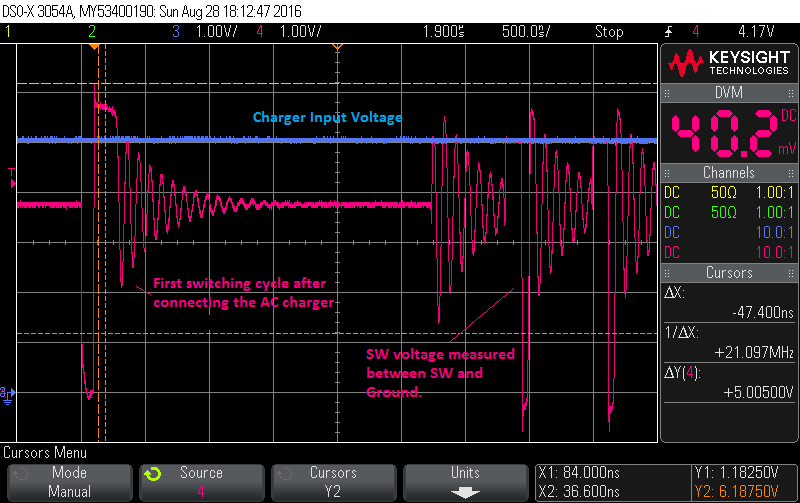Hello,
We are using the BQ24296M as a battery charger/controller, and have had several units that fail with a short between the SW and GND pins. We had a third party lab take some SEM pictures after decapsulating the failed ICs, and we are pretty sure the damage is at LSFET (Q3 in the datasheet). Based on the pictures, which show no other damage, deformation, etc., on Q1, Q2, Q4, etc., and also because LSFET has a pretty low absolute maximum rating, we think the cause is an over-voltage event.
We are still coming up with a list of operating conditions that cause the issue, but we have at least one unit that failed without plugging/unplugging the charger.
The part is used with a 3.7V, 8200mAh Li-Ion Battery. On-the-go operation is hardwired off (i.e., OTG pin tied to ground). The nominal charger voltage is 5V and our board has reverse-voltage protection (up to -24V) and over-voltage protection that starts cutting off the input voltage to the BQ24296M if Vin exceeds 9V.
Also, Ilimit is set to 2.4A max with a 180 Ohm resistor from ILIM to ground.
So, my question is whether you guys have seen over-voltage failures at LSFET in the past, and if so, under what conditions?
I will update this post as we make additional measurements this coming week.
Update #1: The attached screenshot is the behavior when you first plug in an AC charger (to Vbus) (Even though the Input voltage looks like a solid DC voltage, it has just risen from 0V to 5V a short time berfore, which is not shown on the screen). That very first switching cycle sure looks like the FETs are switched in boost mode, with the voltage at the SW pin rising above both Vbus and VBAT. I'm not sure this is related to our issue, but thought it's interesting since the OTG pin is hard tied to ground.



